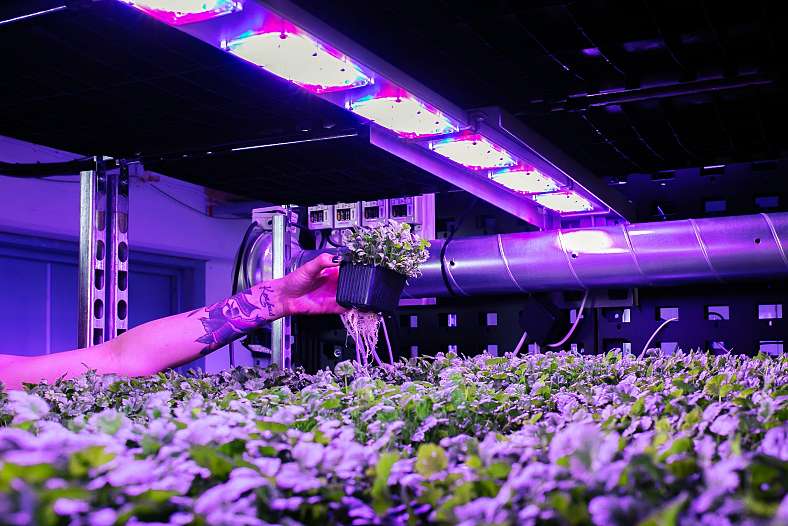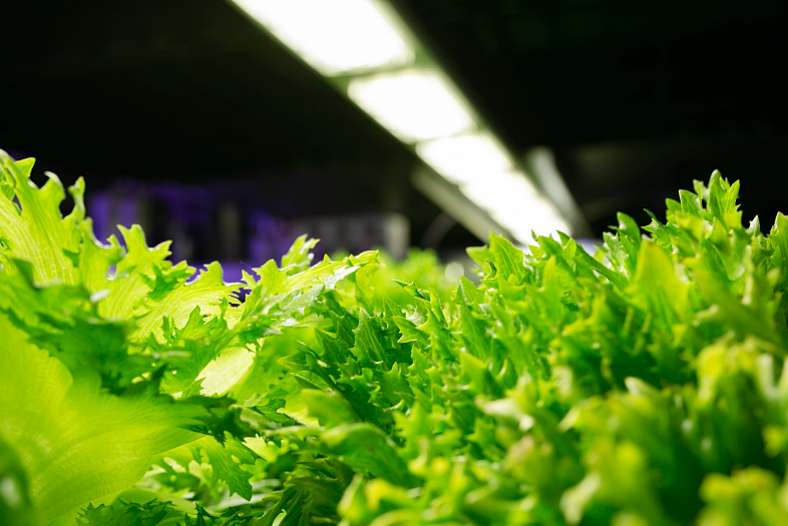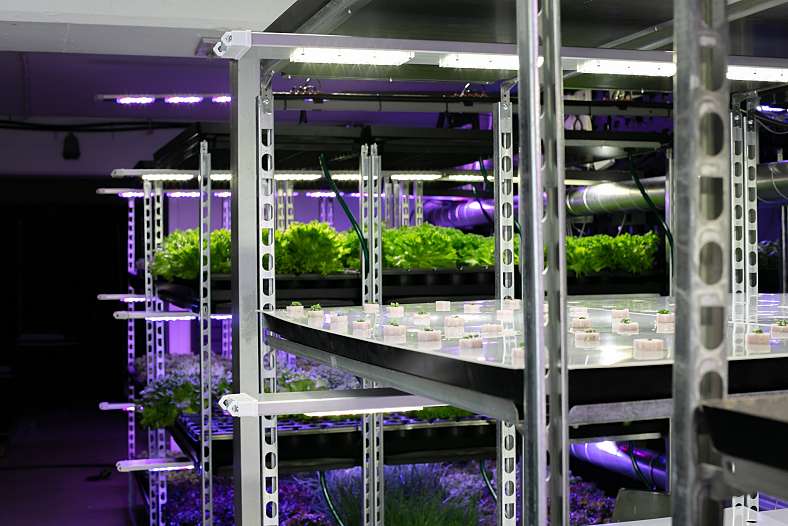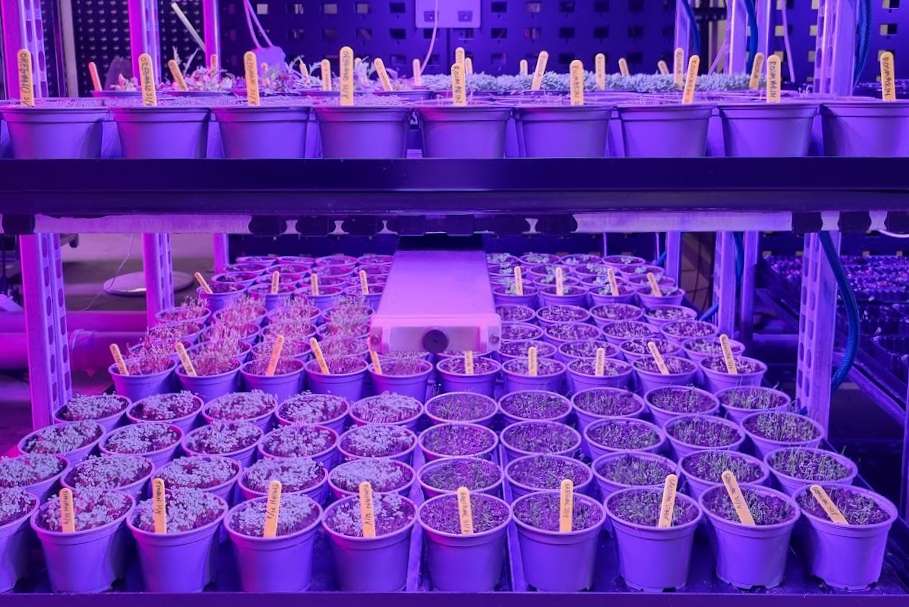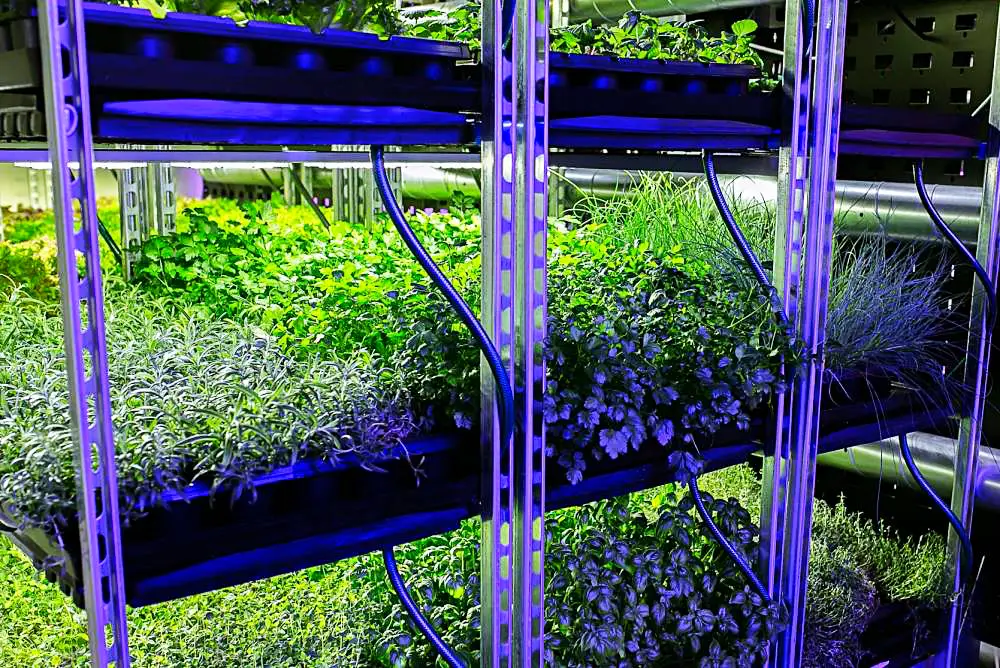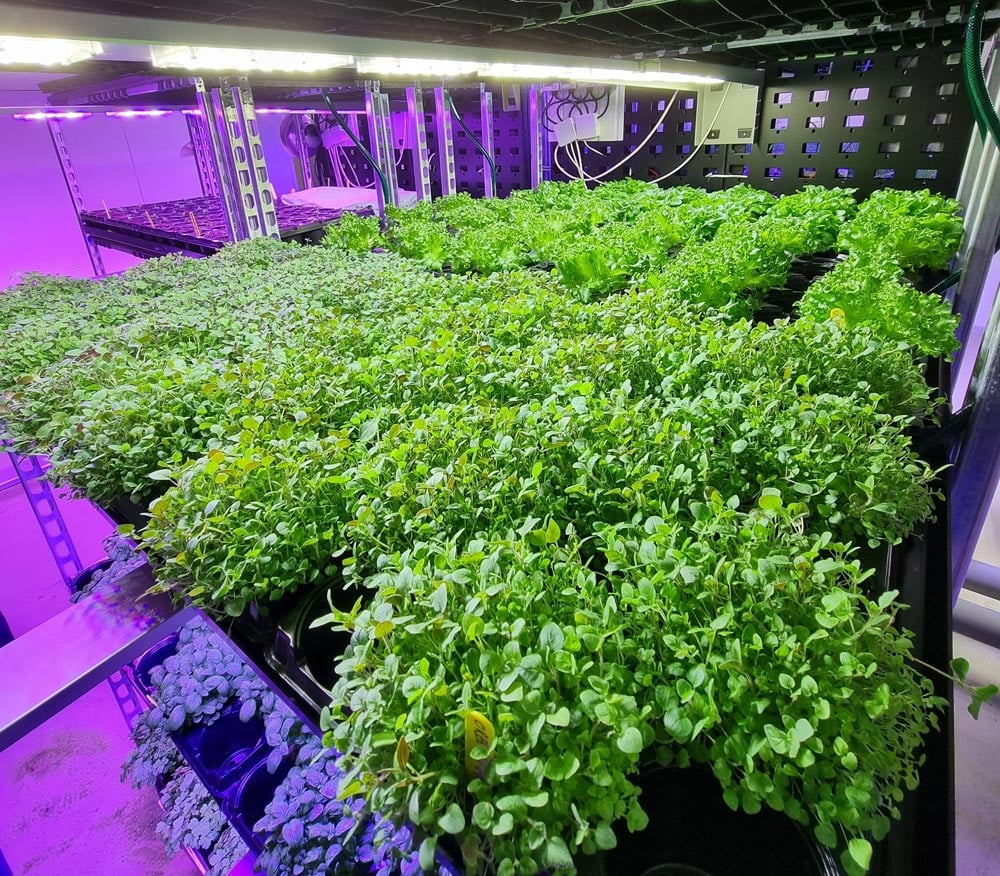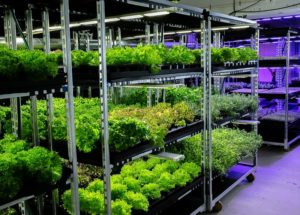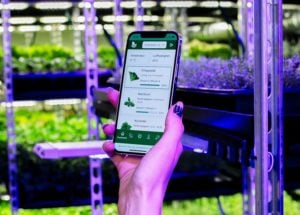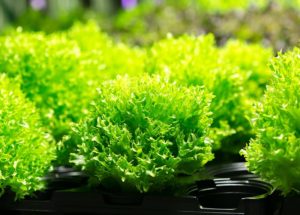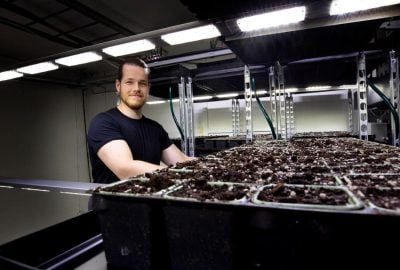Vertical farming is a fantastic business opportunity, but its challenges will put you to the test. Like most startups, also indoor farming demands a well-laid-out strategy to thrive. This is how you overcome the biggest challenges of vertical farming.
Vertical farming enthusiasts will tell you that indoor farming is the combined solution for future food shortages, environmental issues, and all your financial troubles. They might not be wrong, but vertical farming is not a miracle cure. It requires know-how, tactics, and hard work. However, some goals are within everyone’s grasp, like establishing a vertical farm with stable plant growth and a decent profit margin.
Let’s not forget the vertical farming skeptics who like to point out startup costs, energy consumption, technological shortcomings, and carbon footprint as industry downsides. Their arguments carry weight, but their down-talk is as one-sided as the enthusiast’s glorification. The truth lies somewhere in between.
We might take sides in the discussion, but we prefer a constructive approach. This is what it takes to overcome vertical farming’s biggest challenges:
Contents:
- Economic challenges in vertical farming
1.1 Startup costs for vertical farming
1.2 Operating costs for indoor plant growth - Environmental challenges in vertical farming
2.1 Carbon footprint
2.2 Energy consumption - Technological challenges in vertical farming
3.1 Know-how requirements are substantial
3.2 Technology is underdeveloped - Crop-related challenges in vertical farming
4.1 Limited plant selection
4.2 Pests and pollination - Business-related challenges in vertical farming
5.1 Supply and demand
5.2 Sales regulations
Economic challenges in vertical farming
Startup costs are usually the first obstacle raised in any discussion about vertical farming. The thing is that steep startup costs can be avoided, and once the plant growth is stabilized, bigger crops can be cultivated with less workforce than in traditional farming. Read on and learn how to start an indoor farming empire without falling flat broke on your stomach at the first bump in the road.
Startup costs for vertical farming
It’s no secret that vertical farming startups require substantial funding. It takes cash to acquire suitable premises, install plant growth systems (including trolleys, irrigation, light fixtures, ventilation, and more), set up computer systems, and invest in growth materials (seeds, fertilizer, water, etc.). Then comes the never-ending electricity bills.
The startup investment might be off-putting to smaller investors who are curious about vertical farming. This is why Avisomo has come up with an alternative that makes vertical farming startups possible for anyone.
Related article: How much does vertical farming startup cost? (Coming soon)
Avisomo offers rental of complete plant growth systems so that you can start your vertical farm at a manageable size and in your own tempo. This means that you can put off more considerable investments until you feel comfortable with your plant growth skills and your crops have stabilized.
Avisomo plant growth subscription is an opportunity to get your vertical farm startup off the ground at minimal economic risk. In addition, our team is always ready to answer all your questions about how to make a profit from vertical farming?
Operating costs for indoor plant growth
Optimal plant growth requires many growing lamps, which means that vertical farming consumes considerable power. That said, researchers are currently developing new technology to bring down the energy consumption of indoor farming.
Avisomo plant growth systems use the most efficient growth lamps on the market. This means that, compared to HPS or MH growth lights, the power consumption in our systems is radically lower. (More about plant growth lights in the next chapter.)
Related article: How to reduce vertical farming energy consumption?

Environmental challenges in vertical farming
Just like enthusiasts like to point out the potential for sustainable plant growth in vertical farming, the skeptics tend to direct attention to emissions and energy consumption. The question is, to what extent do these factors counteract each other?
Carbon footprint
Until solar cell technology reaches the point where it can sustain large indoor farms, emissions from vertical plant growth are unavoidable. This is a problem that plant researchers are working hard to solve. That said, vertical farming comes with lots of environmental benefits.
First and foremost, vertical farms are designed to reuse nutrients and water. This means that the spillage from vertical farms is minuscule, and the use of chemicals is close to nothing. In addition, since indoor farming doesn’t require arable land, it avoids deforestation and emissions from farming machinery.
Related article: How vertical farming reduces negative environmental impact
Energy consumption
The carbon footprint in vertical farming is mainly caused by the grow lights’ power consumption. However, putting the power consumption of vertical and traditional farming against each other is an unfair equation.
We need to factor in emissions, deforestation, spillage, and land transport before making a fair environmental equation for both parties.
When it comes to vertical farming, we know that modern plant growth systems consume much less energy than the systems used only five years ago. We also know that better plant light technology is under development.
Avisomo recommends LED lamps since they are much more energy-efficient than HPS or MH growth lights. LED lamps offer better light control, making optimized plant growth possible with less light spent. The LED lamps’ price tag might seem steep, but considering the 20-year life expectancy, these lamps are the best option.
Related article: Why LED grow lights are best for vertical farming?
Technological challenges in vertical farming
Once more, let’s not underestimate the opinions of skeptics. The fact that the technology is under development is a legitimate cause for concern, but it’s also a matter of seeing the glass as half-full or half-empty. This is what divides the enthusiasts and skeptics of vertical farming.
Know-how requirements are substantial
Like all businesses, also plant growth requires industry knowledge. There’s a sea of practicalities to get acquainted with and several professions to learn. You should also consider expansion early on, as it will necessitate hiring and training more people.
Avisomo plant growth subscription makes the process easier. Especially when funding is limited, the option to take your vertical farm development in smaller increments is a luxury most indoor farming startups long for. Avisomo rental allows you to develop your skills and expand your business on your terms and in line with your financial capability.
Technology is underdeveloped
The skeptics are right about one thing; vertical farming technology is young, meaning that it will develop and improve in the years to come. The negative consequence of young technology is that you might have to update it repeatedly to stay ahead of the game. Also, there’s always the risk of running into new technology bugs.
The upside of utilizing new technology is the chance to be at the forefront of a whole new business segment in the food industry. It will surely take much hard work, and it might be frightening to take a risk, but that is how all successful startup stories go. Who wouldn’t have loved to go back in time and invest in bitcoins when the moment was opportune? And why, oh why didn’t we buy those Tesla stocks when Musk & Co. was losing money on their el-car venture?
Related article: Vertical farming research
Crop-related challenges in vertical farming
Another challenge that directly connects to the issue of young technology is the limited plant selection. Once more, the vertical farming skeptics raise a valid point. The plant selection suited for vertical farming is indeed limited. It is also true that closed growth systems require different pest control and pollination methods than traditional farming. All these issues are high on the to-do list of plant researchers worldwide.
Limited plant selection
Right now, large-scale vertical farming factories mainly grow salads, herbs, and microgreens. For the moment being, this might suffice. It takes a good deal of know-how to get a vertical farm off the ground. Therefore, Avisomo advises all startups to focus on a small selection, or maybe just one plant type to begin with. It is much easier to replicate the process with other plants when you have gotten the hang of plant optimization once.
As for expanding the plant selection, some of the largest vertical farming companies in the world are already on the case. One such company is the German-based Infarm. In late 2021 Infarm promised to expand its plant growth with 40 new species by 2022. Infarm plans to mass-produce vertically grown tomatoes, mushrooms, peas, strawberries, and many other vegetables by the end of the year. In other words, it is only a matter of time before the plant selection in indoor farming becomes much broader.
Related article: Vertical farming vs. traditional farming
Pests and pollination
Future technology is the missing linchpin in vertical farming. Pest control and pollination are also affected by the research in progress. When it comes to this issue, we might even have to side with the skeptics for a moment.
Vertical farming enthusiasts tend to paint a pest-free picture that is not entirely in touch with reality. We even painted a similar picture ourselves, a little higher up in this article.
Even though vertical farms are naturally sheltered from plant pests and disease, the plants are still susceptible to these dangers. Since the mainline of defense is a sterile environment, entire crops might be lost if pests or diseases find their way into your growth systems.
It is true that crop disasters are rare but be aware that vertical farms are far from immune to pests and disease. The best way to prevent such calamities is to maintain a sterile environment and set up strict routines to keep it so.
Pollination is always done by hand in vertical farming, which requires a certain workforce. The people in charge of the pollination must be well-trained to not over/under-pollinate your plant growth.
Luckily, technology has come a long way in helping vertical farmers with sufficient pollination. Sensors, surveillance, and computer programs tell you when to pollinate your plants. After the harvest, when it’s time for re-pollination, the routines will be optimized and the pollination process perfected.
Avisomo’s plant growth programs are called «plant recipes.» These recipes use the latest technology to ensure that your pest prevention and pollination are taken care of professionally.

Business-related challenges in vertical farming
If your vertical farming startup is the first of its kind in your area, there are some business-related challenges to consider. Regulations of sales, for instance, are different from country to country or state to state. Find out what regulations you will have to deal with and what competition you will face.
Supply and demand
There is no question about the increasing demand for fresh, organic, and pesticide-free plants. The question is if you can make a living from growing salads, herbs, and microgreens on a vertical farm? Today, the market is far from oversaturated, which means that any vertical farm startup has the odds stacked in its favor.
Indoor farming is especially advantageous in areas with cold or harsh climates. Vertical farmers don’t need to worry about sunny weather. They can cultivate stable plant growth all year round. Salads and herbs have 12 growth cycles per year, while microgreens can be grown 36 times every year.
Salads and herbs are seasonal in many countries, particularly in areas with harsh weather conditions. This leaves enormous holes in the market for larger parts of the year, and most customers prefer locally grown produce to imported foods. If your vertical farm startup is such an area, you can easily home in on that market share and provide locally grown plants in the traditional farming off-season.
Related article: How to create ideal plant growth conditions in vertical farms?
Sales regulations
Sales regulations might be a significant bump in the road for vertical farm startups. Norway is a perfect example since a handful of large wholesalers govern the entire plant growth market.
A safe way to ensure large-scale plant sales is to secure a deal with supermarket chains. In Norway, all supermarket chains, except one, buy their plants from two large wholesalers. These wholesalers are in league with a couple of national farming organizations in which most traditional farmers are members.
This means that it’s not enough to set up and maintain a perfect vertical farm. In Norway, you also need to broker a deal with the wholesalers to get a foothold in the market, which is easier said than done.
It is, of course, possible to make a decent living without selling to supermarkets. Many specialty stores and restaurants will surely be interested in top-quality plants. That said, if your startup’s goal is to establish a large-scale indoor plant factory, you’ll be at a disadvantage without the business of supermarket chain stores.
The good news is that the general interest in healthy and high-quality plant growth has increased tenfold worldwide over the last decade. People are becoming more health-conscious and more engaged in environmental issues, which gradually escalates the demand for top-notch vertically grown plants and vegetables.
Related article: What does vertical farming mean to investors?
Conclusion
Vertical farming has yet to reach its full potential, but none of its challenges are insurmountable. We at Avisomo like to think of the vertical farming market as a warehouse bursting with half-full glasses, all of which we are working to fill to the brim.
Visit our website to find out more. In our article section, you’ll find lots of helpful tips about indoor farming, like this post on how to get started with vertical farming?
Resources
Agritechture: Calculating the Carbon Footprint of Vertical Farming and Traditional Farming
Environmental-Conscience.com: Advantages & Disadvantages of Vertical Farming
Erie Mutual: The Problem With Vertical Farming
Gartnerhallen: Slik balanseres grøntmarkedet
Global Eco Guy: No, Vertical Farms Won’t Feed the World
Powered by Plenty: 9 Reasons Why Vertical Farms Fail
Tüv Süd: Vertical Farming and the Challenges of Horticultural Lighting


